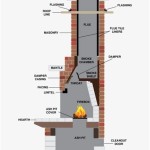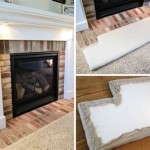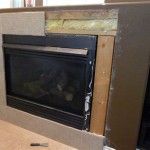Faux Paint Fireplace Tiles: A Cost-Effective and Versatile Solution for a Stunning Fireplace
Fireplaces are a focal point in many homes, adding warmth, ambiance, and a touch of elegance. While traditional tile options can be expensive and time-consuming to install, faux paint techniques offer a budget-friendly and versatile alternative. Faux paint fireplace tiles provide a realistic and visually appealing solution that can transform the look of any fireplace without the hassle and expense of real tiles. This article explores the benefits, techniques, and considerations for using faux paint to create stunning fireplace tiles.
Benefits of Faux Paint Fireplace Tiles
Faux paint offers several advantages over traditional tile options when it comes to fireplace design. It is a cost-effective solution, significantly reducing the overall cost of the project. Faux paint materials are typically more affordable than tile, and the labor involved in application is also less demanding. This makes faux paint an attractive option for budget-conscious homeowners.
Another key advantage of faux paint is its versatility. It allows for a wide range of creative possibilities, enabling homeowners to achieve unique and personalized designs. From classic brick patterns to modern abstract designs, faux paint can mimic the look of various tile styles. This versatility allows homeowners to complement the overall aesthetic of their home and create a fireplace that reflects their personal taste.
Moreover, faux paint is a relatively easy application process. It is a DIY-friendly option, allowing homeowners to tackle the project themselves and save on professional installation costs. With proper preparation and technique, even novice painters can achieve stunning results. The ease of application makes faux paint a convenient choice for those who want to update their fireplace without undergoing a major renovation.
Techniques for Creating Faux Paint Fireplace Tiles
Achieving a realistic and convincing tile effect with faux paint requires careful planning and application. Several techniques can be employed to create the desired look, each with its own advantages and considerations. Here are some common techniques for faux paint fireplace tiles:
1. Sponge Painting:
This method involves using a sponge to apply paint in a dabbing motion, creating a textured effect that resembles individual tiles. Different sponge sizes and shapes can be used to achieve different tile sizes and patterns. To create a realistic effect, use multiple layers of paint, gradually blending colors and achieving a depth of color.
2. Rag Rolling:
Rag rolling involves using a crumpled rag to apply paint, creating a textured and uneven surface similar to brick or stone tiles. This technique allows for a natural-looking effect, with subtle variations in color and pattern. To achieve a convincing texture, use multiple layers of paint, blending colors and creating gradual transitions.
3. Stamping:
This technique relies on using stencils or stamps to create repeating tile patterns. These tools can be purchased or created using cardboard or other materials. The advantage of stamping is that it provides precise and consistent tile shapes, creating a more uniform and ordered look.
Considerations for Faux Paint Fireplace Tiles
While faux paint offers a convenient and affordable solution for fireplace design, it is essential to consider certain factors before embarking on the project. Here are some considerations to keep in mind:
1. Preparation:
Proper surface preparation is paramount to ensure a successful and long-lasting faux paint finish. The fireplace surface should be clean, smooth, and free of any imperfections. This may involve sanding, patching, and priming to create a smooth and even base for the paint.
2. Paint Selection:
Choosing the right paint is crucial for achieving a realistic tile effect. Water-based acrylic paints are generally recommended for their durability, ease of application, and ability to resist heat. When selecting colors, consider the overall style and color scheme of your home.
3. Design Considerations:
Before applying the paint, it is advisable to sketch out the desired tile pattern on the fireplace surface. This helps visualize the final design and identify any potential issues or adjustments.
4. Protection:
Once the faux paint is applied and dried, it is essential to protect the surface from damage. Applying a sealant or clear varnish can help preserve the paint and enhance its durability. This will help maintain the vibrant color and texture of the faux tiles over time.

How To Paint Tile Easy Fireplace Makeover Setting For Four Interiors

110 Diy Fireplace Makeover How To Paint Tile Jessica Welling Interiors

How To Paint Faux Subway Tile A Diy Fireplace Makeover

Faux Marble Fireplace Savvy Apron

How To Paint Tile Easy Fireplace Makeover Setting For Four Interiors

110 Diy Fireplace Makeover How To Paint Tile Jessica Welling Interiors

How To Paint Faux Tile Fireplace Make Over Diy

Er Friendly Fireplace Makeover With L Stick Tiles The Homes I Have Made

How To Paint Faux Subway Tile A Diy Fireplace Makeover

A Stunning Fireplace Mantle With Faux Tile Here S How
Related Posts








